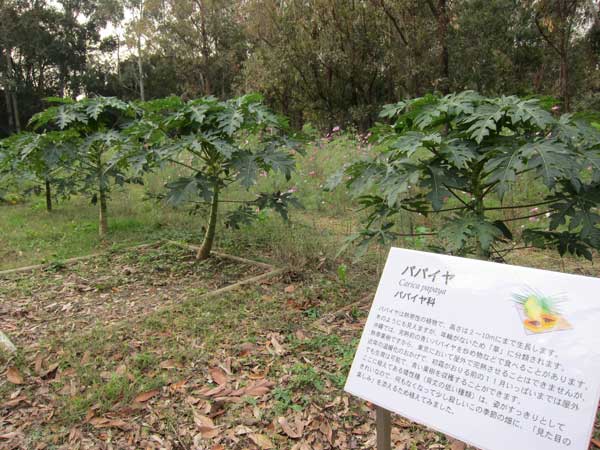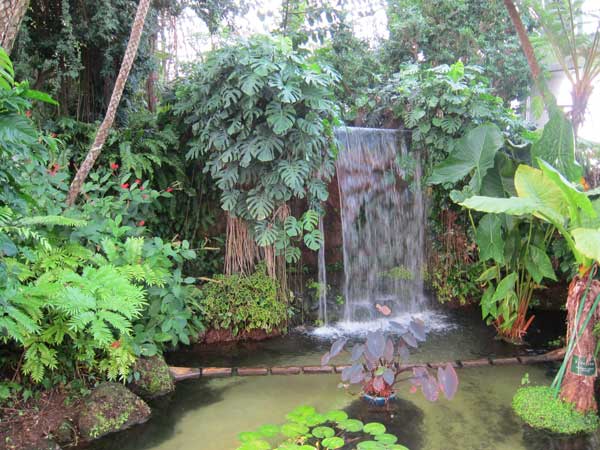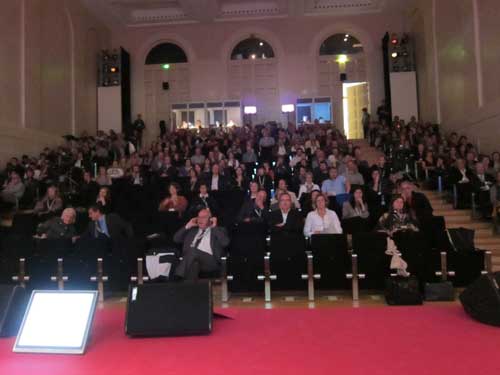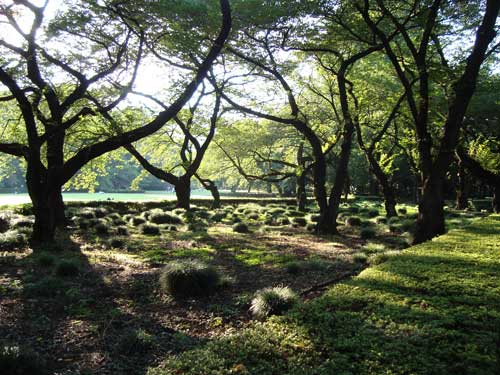
寒いときには、温室に来るのが熱帯林への安い休暇みたいです。夢の島熱帯植物館を訪れました。戦後、たくさんのごみで作られた島です。外でパパイアの並木を見ました。この果物を東京で育てることができますか。
The same week I participated in the Umi no Mori tree planting, I had the opportunity to re-visit Yume no Shima, Tokyo’s most famous artificial island made of waste. This urban development started in the 1950s. Now it’s a vast area with a sports club, botanic garden, playing fields, semi-wild palm landscape, a marina, and a still functioning incinerator. It’s showing its age with deferred maintenance and sparse usage.
I love how it’s named “Dream Island.” This time I visited the botanic garden. On the outside is a row of papaya trees, which I thought too tropical to grow outdoors in Tokyo. There’s also a row of ceramic frog planters leading to the front door. A green house is a great place to go on a cold day, like a brief tropical holiday at very low cost.






